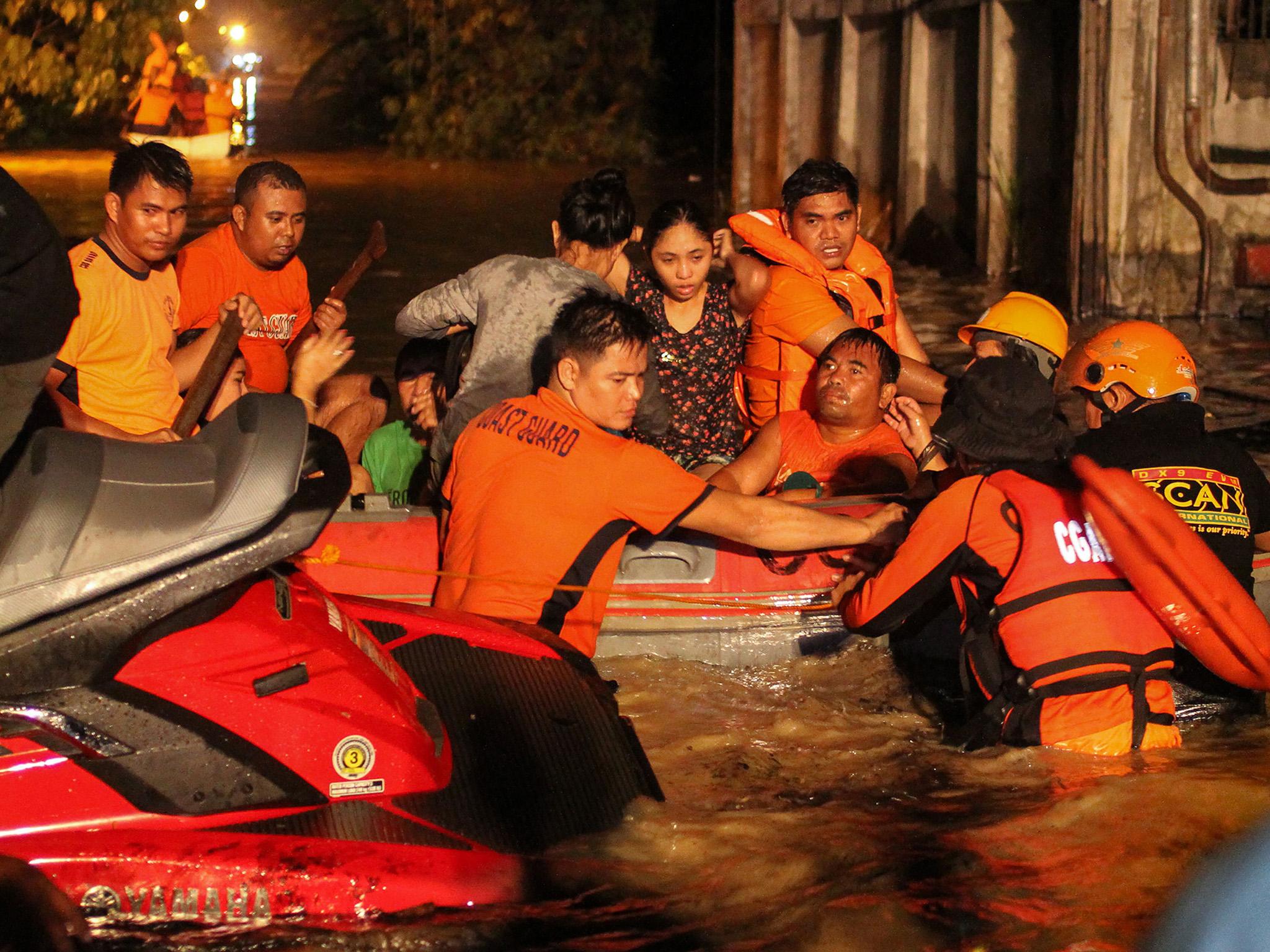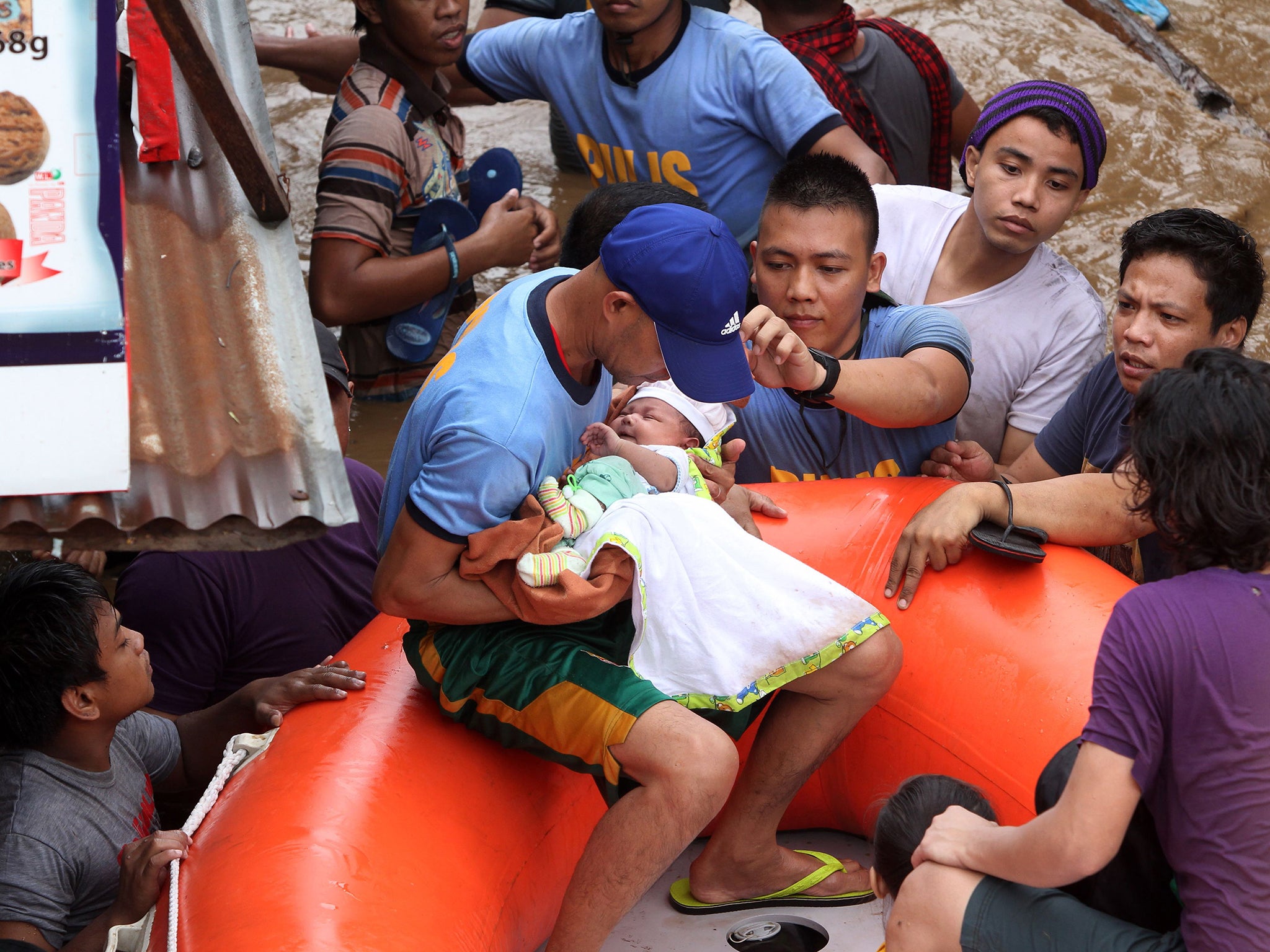Philippines typhoon: Tropical Storm Trembin leaves more than 200 dead in landslides and flash floods
Typhoon leaves 160 missing and thousands homeless
Your support helps us to tell the story
From reproductive rights to climate change to Big Tech, The Independent is on the ground when the story is developing. Whether it's investigating the financials of Elon Musk's pro-Trump PAC or producing our latest documentary, 'The A Word', which shines a light on the American women fighting for reproductive rights, we know how important it is to parse out the facts from the messaging.
At such a critical moment in US history, we need reporters on the ground. Your donation allows us to keep sending journalists to speak to both sides of the story.
The Independent is trusted by Americans across the entire political spectrum. And unlike many other quality news outlets, we choose not to lock Americans out of our reporting and analysis with paywalls. We believe quality journalism should be available to everyone, paid for by those who can afford it.
Your support makes all the difference.Around 200 people have been killed in one of the deadliest storms to hit the Philippines this year.
Tropical Storm Tembin triggered landslides and flash floods, leaving 160 missing and thousands homeless as it strengthened into a typhoon before moving into the South China Sea.
The Philippines is battered by about 20 typhoons a year and warnings are routinely issued, but the level of destruction wreaked by the tropical storm on the southern island of Mindanao from late on Friday came as a surprise.

Most of the dead and missing were reported in the hard-hit provinces of Lanao del Norte and Lanao del Sur, and on the Zamboanga Peninsula.
“The figure could increase as we continue to received reports from the field as the weather improves,” said a police spokesman on Mindanao, Superintendent Lemuel Gonda, referring to the death toll.
“We are slowly restoring power and communications in affected areas.”
Disaster officials said 159 people were listed as missing while about 70,000 had been forced from their homes.
Thousands of villagers fled to emergency shelters and more than 500 passengers remained stranded in airports and seaports after the coast guard prohibited ferries from venturing out in the rough seas, and several flights were cancelled as the storm raged on Saturday.
Soldiers and police joined emergency workers and volunteers to search for survivors and victims, clear debris, and restore power and communications.
Disaster officials said many villagers had ignored warnings to leave coastal areas and move away from riverbanks, and got swept away when flash floods and landslides struck.
The typhoon was packing maximum sustained winds of 120kph (75mph) and gusts of up to 145kph (90mph).

An inter-island ferry sank off northeastern Quezon province on Thursday after being lashed by fierce winds and big waves, leaving at least five people dead. More than 250 passengers and crewmen were rescued.
The United Nations was ready to help the Philippines, a spokesman for UN Secretary-General Antonio Guterres said in a statement.
Earlier in the week, another tropical storm left more than 50 people dead and 31 others missing, mostly due to landslides, and damaged more than 10,000 houses in the central Philippines.
The south was hit by another disaster over the weekend when fire swept through a shopping mall in the city of Davao, killing 37 people, workers at a call centre.
“This terrible tragedy has left us with heavy hearts. We offer our condolences and prayers to the families and loved ones of the victims,” said Gary S Laben, CEO of Research Now SSI, which operates the call centre. “Words cannot express how saddened we are. We are grateful for the courageous response of the first responders and others who rushed to the scene.”
Additional reporting by agencies

Join our commenting forum
Join thought-provoking conversations, follow other Independent readers and see their replies
Comments